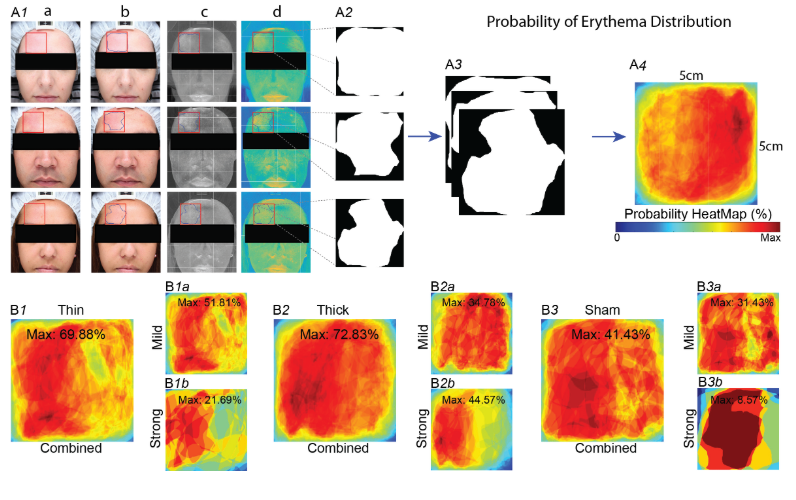New Paper: The Influence of Skin Redness on Blinding in Transcranial Direct Current Stimulation Studies: A Crossover Trial
Ezquerro F, Moffa AH, Bikson M, Khadka N, Aparicio LVM, Sampaio BD Jr, Fregni F, Bensenor I, Lotufo P, Pereira AC, Brunoni AR
Download: PDF Published in Neuromodulation DOI
Abstract
Objective: To evaluate whether and to which extent skin redness (erythema) affects investigator blinding in transcranial direct current stimulation (tDCS) trials.
Material and Methods:Twenty-six volunteers received sham and active tDCS, which was applied with saline-soaked sponges of different thicknesses. High-resolution skin images, taken before and 5, 15, and 30 min after stimulation, were randomized and presented to experienced raters who evaluated erythema intensity and judged on the likelihood of stimulation condition (sham vs. active). In addition, semi-automated image processing generated probability heatmaps and surface area coverage of erythema. Adverse events were also collected.
Results: Erythema was present, but less intense in sham compared to active groups. Erythema intensity was inversely and directly associated to correct sham and active stimulation group allocation, respectively. Our image analyses found that erythema also occurs after sham and its distribution is homogenous below electrodes. Tingling frequency was higher using thin compared to thick sponges, whereas erythema was more intense under thick sponges.
Conclusions:Optimal investigator blinding is achieved when erythema after tDCS is mild. Erythema distribution under the electrode is patchy, occurs after sham tDCS and varies according to sponge thickness. We discuss methods to address skin erythema-related tDCS unblinding.
